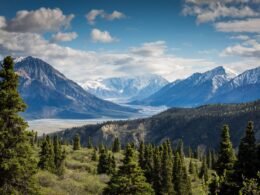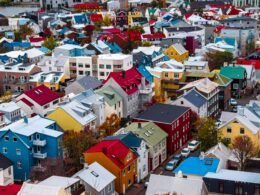Fiji is an island country in Melanesia in the South Pacific Ocean. It’s an archipelago consisting of over 330 islands and over 500 islets, with around 100 of the islands being inhabited.
The two main islands, Viti Levu and Vanua Levu, contain close to 90% of the country’s 925,000 population. The capital city is Suva, which is on the island of Viti Levu, which is also the most built-up island.
Thanks to a large number of islands, Fiji offers a lot of choice for travelers, and it really depends on what you’re looking for when it comes to choosing which ones to visit.

Whether you’re looking for relaxation on white sandy beaches, exploring tropical jungles, or water sports, Fiji has a lot to offer.
The islands are located to the north of New Zealand, east of Australia and west of the Polynesian island of Bora Bora. Often, travelers find the most convenient way to reach the islands is by flying from New Zealand or Australia.
Fiji lies at the centre of the Southwest Pacific and makes for a great destination en route to other islands in the region, such as Tonga and Vanuatu.
Fiji is a popular choice among travelers, thanks to its natural beauty, delicious cuisine, friendly culture, and excellent water sports opportunities, though it is difficult to reach unless you are in the region.
In this article, we consider the best time to visit these breathtaking islands.
Dry Season: May To November
The dry season is typically cooler, and they’ll be less rain and lower humidity. It’s considered the winter in Fiji. Since the country enjoys a tropical climate, however, it isn’t comparable to the winter in a temperate climate. Average temperatures in the dry season hover around 22 degrees Celsius. It’s a popular time to visit the islands since it doesn’t get uncomfortably hot, there are fewer mosquitoes and there won’t be any cyclones. July and August are considered the peak months when tourist numbers will be at their highest.
The dry season is also considered the best time for surfing, especially between May and August, since the waves are likely to be bigger. Later in the season, when the waters are at their clearest, due to the lower temperatures, is considered the best time for scuba diving and snorkelling, though they can be enjoyed year-round.

Wet Season: December To April
Wet season, or rainy season, is Fiji’s summer, with temperatures typically stay between 22 degrees to 33 degrees Celsius. It’s a good time to visit for those looking for that extra heat, but there will be a higher chance of rain, and mosquitoes.
There is also a small chance of cyclones, and the humidity will be higher. Rainfall is likely to occur in the afternoons in short bursts, so it’s not going to be raining frequently and it can be easily worked around.
Don’t forget to pack some mosquito repellent if you’re heading to Fiji in the wet season. The wet season will however be quieter, especially between December and March, since it is low season and prices will also be lower.

Climate & Terrain
Fiji has a tropical marine climate with two distinct seasons, dry (winter) season and wet (summer) season. The dry season is cooler with average temperatures around 22 degrees Celsius. There’ll be more rain in the summer, especially inland.
Since Fiji is made up of a collection of low-lying islands, climate change is an important issue in the country since the islands are at risk of rising sea levels, extreme weather conditions and coastal erosion.
The two largest islands, Viti Levu and Vanua Levu account for almost 75% of Fiji’s land area. The terrain is mostly mountainous and thick tropical forest. Fiji is also known for its white sandy beaches lined with palm trees, crystal-clear waters and abundant marine life. There are several national parks, including Bouma National Heritage Park and Koroyanitu.
Culture In Fiji
Thanks to Fiji’s location in the South Pacific, as well as the fact that it’s so close to other Polynesian islands, as well as to mainland New Zealand and Australia, the islands have a unique blend of cultures. There’s a strong sense of indigenous Fijian culture, which is very welcoming and family oriented. Traditional crafts, such as basket weaving and pottery are still practiced widely. Fijian culture is also strongly influenced by European, Chinese and Indian cultures, but still retains its indigenous flair. Music and performing arts are common on the islands, which includes the Meke,
When it comes to cuisine, seafood is popular, especially squid, roasted fish as well as staple ingredients that have been part of the traditional cuisine for a long time, such as rice, flour and tea. Other popular ingredients include taro, cassava, yams and leafy green vegetables.

So When Is The Best Time To Visit Fiji?
Ultimately, the best time to visit these amazing islands will depend on how comfortable you are with heat, and which kinds of activities you enjoy.
For water sports such as scuba diving, snorkeling and fishing, the dry season is going to be best.
If you’re looking for a sun-tan and that extra tropical humidity, then the wet season is for you.
The wet season is also quieter and cheaper, but there won’t be as many activities on offer. Either way, you’re sure to make some unforgettable memories whenever you visit.














